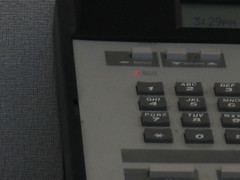 Prefer to listen, than read? Click this link to listen or download. (9:06)
Prefer to listen, than read? Click this link to listen or download. (9:06)As with any new thing, questions arise. I'll answer some of them here, and then I hope we can get on with the business of why we're here in the first place.
"Shouldn't the Guild be doing this?"Well, first of all, I don't think there is a "should." The Guild does a lot of valuable things for us, and they've done more to provide marketing resources for practitioners in the last 3 years than at any time previously. It's not my purpose here to have a full debate on what the Guild should be doing more of, or less of, or not at all. The economic reality is that to centralize ALL of the marketing support for the
Feldenkrais Method® would be cost prohibitive, and ridiculously so. The Guild will still be active in marketing the method in a variety of ways that are cost effective and beneficial for practitioners. The purpose of this blog is to support those efforts, and to provide
continuously available instruction for practitioners to be able to use the resources the Guild can provide. Since the Guild operates under financial and time constraints, there's no need to limit ourselves to what the Guild makes available. You can read further about this in the first post to this blog, "Launch."
"What gives you the right to do this? Who the hell even asked you?"I'll share a bit more of my personal philosophy with you.
The only person responsible for me, is me. The only person responsible for my success or failure in what I choose to do, or not do, is me. Since I am the one solely responsible for my livelihood, I can't afford to wait for any person or any institution to provide me with what I need, no matter how well intentioned they may be. Because we insist on transparency in the Guild, and because we value group process as we do, you have to be realistic and know that projects, especially important ones, will move forward slowly and deliberately. I value that. At the same time, when I graduated four years ago from my training, I did not have an expectation that it was the Guild and its activities that were going to make or break me as a successful practitioner. I had to do something, and immediately. Technology has come a long was in the past four years, so now we have the opportunity to share and help each other in unprecedented ways. So I'm doing this because I can, and because I know how.
Who asked me? Over the years, several dozens of practitioner friends at all levels of the organization have sought me out, subscribed to my newsletter and other blog,
SomaQuest, and asked for my advice and encouragement. Here's the great thing: if you don't like what I am saying or advising, you don't have to do it. You don't have to like it, or agree, and it stops there. I'm not speaking "from on high" as a matter of Guild policy, where I have to justify a line item in a budget or anything else. I'm simply a free agent, offering something useful, which you can subscribe to or not. This can potentially work for everybody.
"If you're taking over the marketing stuff from the Guild, then what IS the Guild doing for me? Why should I continue to be a member of the Guild?"First of all, I'm not "taking over" anything. I'm providing a way to enlarge the conversation about marketing the
Feldenkrais Method among practitioners.
As I mentioned earlier, the Guild currently does much that is valuable to us, although you might not perceive it as being very sexy or fun. To digress a bit, I weathered (yes, pun!) Hurricane Ike in Houston in September '08. Believe me: having ice in your freezer may not seem like a big deal, but when your power has been out for three or four days and all your food is thawing, you realize how essential a basic thing like ice is to your continued survival. SO-- a lot of what the Guild does for us is like making sure that ice is available. A short list includes service marks, participation in the
International Feldenkrais Federation, training policy, website, assistance with legislative issues, and keeping the organization running smoothly. They also support short-term projects for the members, like the CORR initiatives to produce our current marketing kit and materials. That's part of what the Guild does for us now.
However, I believe that so much is changing in culture and technology that
the Guild has the potential to be even more valuable to us than it is now. I'm not sure what shape that will take, but here are two examples that model what I'm thinking about.
One: Apple Computers. When Apple launched the iPhone a little over 18 months ago, the response was unprecedented. Apple provided a sleek, friendly interface for the user, and a few applications (or "apps") beyond its usefulness as a phone, like a digital camera, and wireless capability (so you can use it like your computer). They did not try to take on the responsibility for responding to every consumer request for more apps, nor did they try to control, limit, or do it all themselves. They encouraged independent developers to come up with useful apps, and the flood of creativity and energy around that action has been astonishing. All Apple did was provide information, guidelines, and incentives. New apps are being added every day, so that you can access Google earth for maps to and from anywhere on the globe; read newspaper articles on the screen, play games, store recipes and grocery lists, manage your calendar, and even check your Facebook page. Why should Apple continue to exist, if outside software developers are doing all the work? Simple. Apple provides
the container. The organization is the vehicle whereby developers and users can have access to each other for problem solving and creativity, and it's also immensely profitable. I see the Guild doing some of this type of thing already, and future opportunities lie ahead. The Guild is the container in which activity around the method takes place. This container is the most valuable thing we have.
The other model I have in mind is the old Grimm Brothers fairy tale,
"Stone Soup." Have you heard it?
According to the story, some travelers come to a village, carrying nothing more than an empty pot. Upon their arrival, the villagers are unwilling to share any of their food stores with the hungry travelers. The travelers fill the pot with water, drop a large stone in it, and place it over a fire in the village square. One of the villagers becomes curious and asks what they are doing. The travelers answer that they are making "stone soup", which tastes wonderful, although it still needs a little bit of garnish to improve the flavor, which they are missing. The villager doesn't mind parting with just a little bit to help them out, so it gets added to the soup. Another villager walks by, inquiring about the pot, and the travelers again mention their stone soup which hasn't reached its full potential yet. The villager hands them a little bit of seasoning to help them out. More and more villagers walk by, each adding another ingredient. Finally, a delicious and nourishing pot of soup is enjoyed by all. (Source: Wikipedia).
It's another "container" metaphor: the Guild, with its Board, committee structures, and projects, is the travelers with the pot, the stone, and the water; the members are the villagers. (Something about "creating conditions favorable for soup-making.") Without the big pot, and the stone, there's no container and no catalyst to inspire action and contribution. The villagers were starving: one person just had a couple of potatoes, one had only an onion, one had a few beans. The story shows how each person received value far beyond their contribution. The value of the Guild, and Guild membership, is in the contributions of the individual members. The Guild provides a container within which it all can happen.
I also have to point out something obvious. All contributions from anyone and everyone make a wonderful and abundant soup, that everyone will want to eat. There's one ingredient, however, that NOBODY wants in their soup, and that is --
Poop.
We all have to do it (poop, that is), it's part of life: but keep it out of the soup! It only takes a tiny bit of poop, and then, it doesn't matter how fantastic the other ingredients are: you've got poop soup. Negativity, jealousy, gossip, combativeness, disrespect -- all are forms of poop that can turn a meeting or an organization into poop. So, please do that somewhere else, if you must. Don't poop in my soup!
So, that's all I want to say about the Guild, and that's all the time I want to spend justifying the existence of this blog. Full disclosure: I am a Guild member, and I intend to continue to be. But this blog is independent of the Guild, in that it's my project, not theirs. I'm just bringing a few potatoes to the pot.
 Image by divamover via Flickr
Image by divamover via Flickr![Reblog this post [with Zemanta]](http://img.zemanta.com/reblog_e.png?x-id=a50de5e5-adaf-4a34-be34-568c055d2d3e)

![Reblog this post [with Zemanta]](http://img.zemanta.com/reblog_e.png?x-id=d09eaaf9-a0b0-4fd2-838d-a527d49fbea0)

![Reblog this post [with Zemanta]](http://img.zemanta.com/reblog_e.png?x-id=80cd2209-40dd-4df2-9b23-dfd1c288d16e)

![Reblog this post [with Zemanta]](http://img.zemanta.com/reblog_e.png?x-id=2e8bd39a-4703-4a0e-bf50-2e489f525c79)

![Reblog this post [with Zemanta]](http://img.zemanta.com/reblog_e.png?x-id=219f7a57-10b2-4788-9fc4-67c02932dc9b)

![Reblog this post [with Zemanta]](http://img.zemanta.com/reblog_e.png?x-id=d2bfc28c-d9f2-440f-be48-5c43cd48c749)













